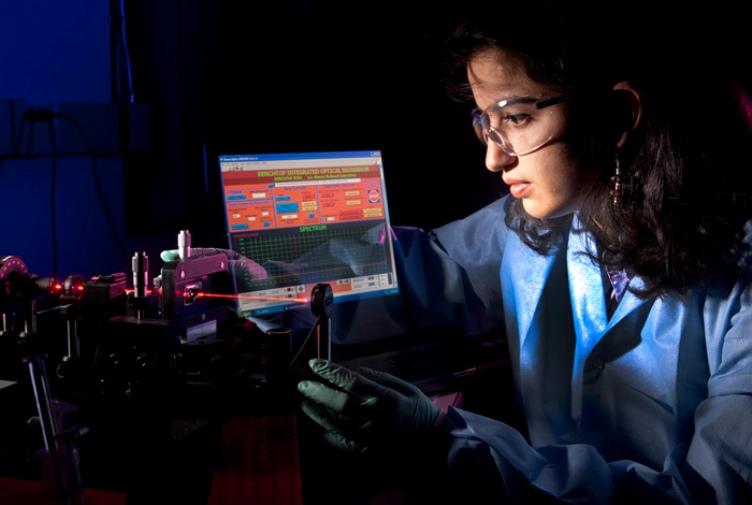For this week’s column, I talked to Faith Dukes, director of K–12 STEM programs at the Lawrence Berkeley National Laboratory, which is home of 14 Noble Prize winners and one of the 17 Department of Energy National Laboratories.
Growing up, Dukes was surrounded by a long line of Black women working in STEM careers. Her mother is a math teacher, one aunt majored in biology, one was a biology teacher, and another is a nurse. This, she said, made her realize that she could do STEM too.
“In terms of foundation, in terms of self-esteem around STEM, seeing this was very influential and important in my own development because it meant that science was something that people in my life did,” she said.
To continue this legacy of support of Black women, Dukes went to Spelman College. After graduating with a bachelor’s degree in chemistry, she went to graduate school at Tufts University. In addition to focusing on research, she was an instructor for Science from Scientists, gaining experience in teaching, curriculum development and outreach. In 2013, she earned her Ph.D. in physical chemistry.
Bringing science to the public
Dukes decided to continue on the path of education integrated with science and was hired as an education coordinator for the MIT Museum. While there, she oversaw more K–12 opportunities, organized science programs for students and interacted with the public.

In 2017, after working at the MIT Museum for four years, she decided she wanted to try something new. She applied for the AAAS Science & Technology Policy Fellowship and was accepted. She was placed at the National Science Foundation and worked on the Presidential Award for Excellence in Science and Mathematics and Teaching and the Presidential Award for Excellence in Science, Mathematics, Engineering and Mentoring programs.
As a fellow, she reviewed the best practices for STEM teaching at the K–12 level and looked at how students were mentored who pursued STEM majors and careers. She also met with the program award recipients to learn about their work and connected with people at the interagency level.
“Going through that whole process was eye-opening in terms of large logistics over short amount of time,” she said. “My mentor was really great and would say let’s go to this inner-agency meeting where all of the government agencies are talking about STEM education.”
Going to these meetings helped her learn the terminology and understand what was happening at the state, federal and community level. It helped her see the bigger picture. After being a fellow for almost two years, she was hired for her current role.
A day in the life working at a national laboratory
Currently, Dukes is the director of K–12 programs for the Lawrence Berkeley National Laboratory. The core of her work focuses on making programs an extension of the community and building strong relationships with the people within the surrounding community.
“We want to do more of connecting cultural aspects to scientific concepts so that students can really see it's not all just going to the lab … we want to show that STEM is not so far away from people,” she said.
Each of the lab’s programs is geared to give students access to STEM. There’s a monthly program called After School Science Hour for K–5 students and a Live Science Program (recently Microphone Mechanics and Georgia Tech collaborated to develop a program to showcase the cultural importance of boom-bap in hip-hop and how to make beats using code).
In addition, in the spring and summer, STEM camps and programs cater to both English and Spanish speaking students in their community. There’s a three-day camp for girls, an internship program, and a training program for using Python. As the options grow, the community demand for STEM programming keeps growing.
“One of the things that I have been able to do is have a niche. I'm working with middle and high school students, but I also would say I’ve been at prestigious research institutions. That has been very significant for me — to continue to try to always still be very much learning about what's happening right now in terms of research and emerging STEM fields,” she said.
Advice for working at a national laboratory
There are 17 Department of Energy National Laboratories to choose from and Dukes encourages scientists to apply for internships at them.
Here are Dukes’ tips:




